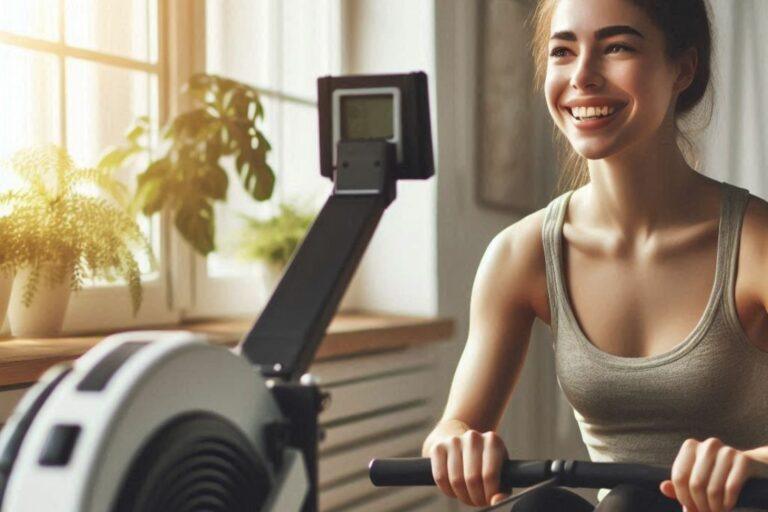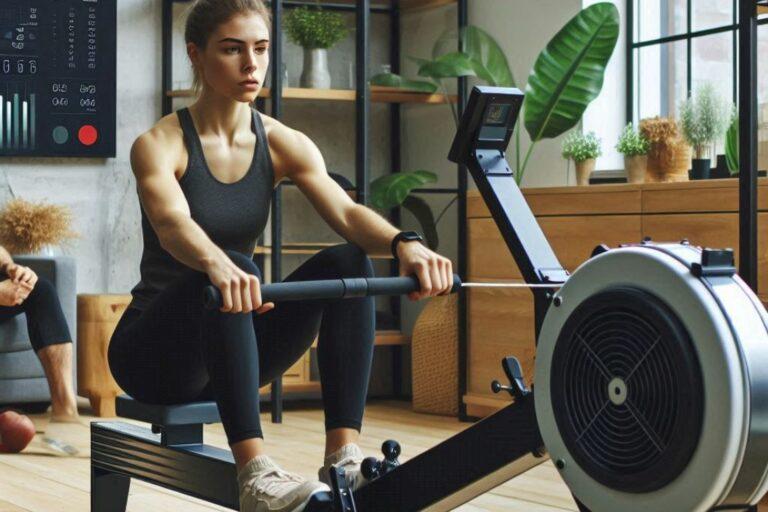Did you know that rowing is one of the most effective full-body workouts available?
It engages nearly every major muscle group, providing a comprehensive exercise experience.
But with countless rowing machine options on the market, choosing the right one can feel like navigating a stormy sea.
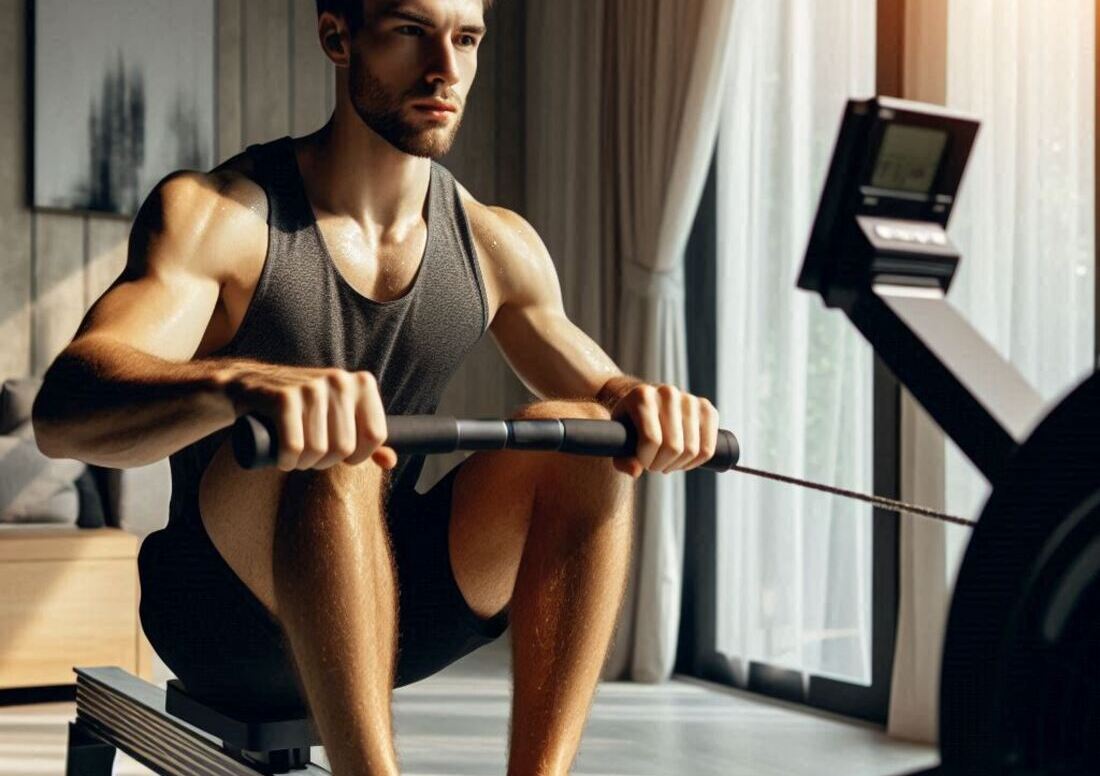
Fear not!
This guide is your compass to finding the perfect rowing machine to suit your fitness level and goals.
Whether you’re a beginner looking to dip your toes in the world of fitness, an intermediate athlete aiming to boost your performance, an advanced fitness enthusiast seeking new challenges, or a senior looking to maintain strength and balance, this comprehensive guide will equip you with the knowledge and tools to make an informed decision.
Understanding the Benefits of Rowing
Rowing is a remarkable exercise that offers a multitude of benefits for people of all fitness levels.
Let’s delve into the reasons why incorporating rowing into your routine can be transformative.
Full-Body Workout
Unlike many exercises that isolate specific muscle groups, rowing engages your entire body.
From your powerful legs to your core, back, and arms, every muscle is put to work.
This comprehensive workout ensures balanced development and strength gains.
Low-Impact Exercise
Rowing is a low-impact exercise, making it gentle on your joints.
This is particularly beneficial for individuals with joint pain or those recovering from injuries.
Unlike high-impact activities like running, rowing allows you to enjoy a challenging workout without the risk of excessive stress on your body.
Cardiovascular Health
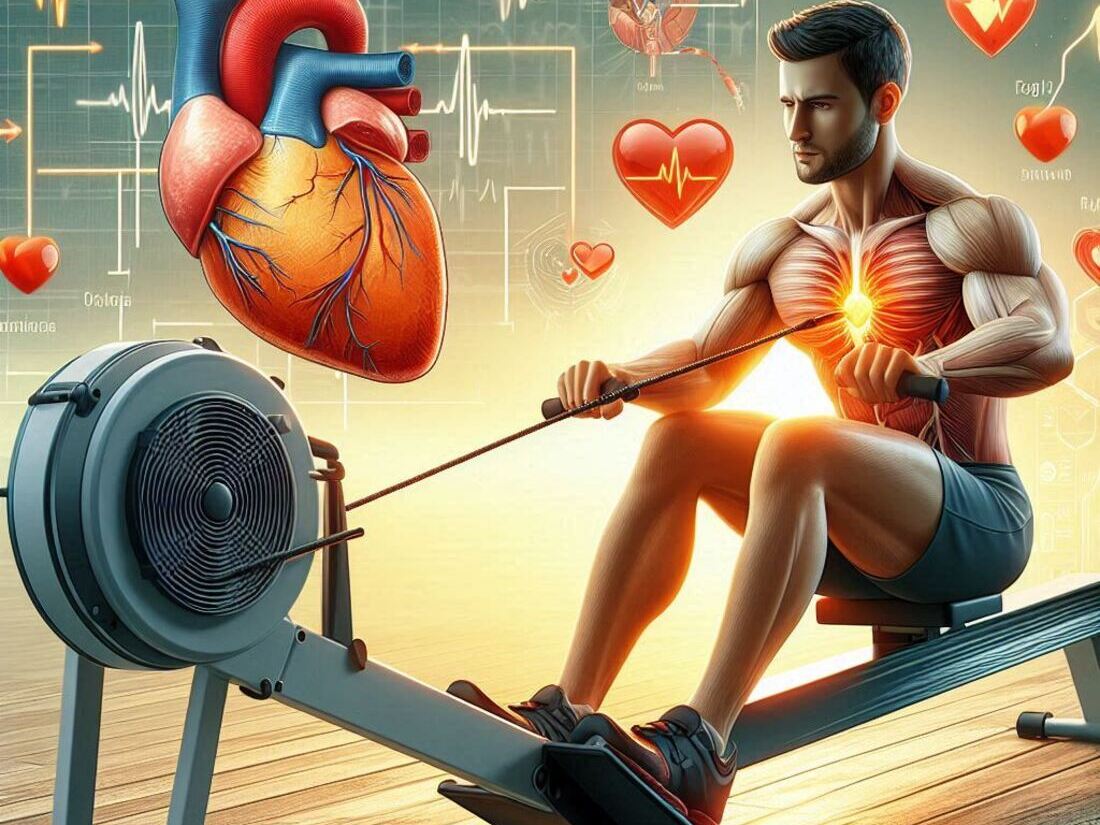
Rowing is an excellent cardiovascular exercise that helps strengthen your heart, lungs, and blood vessels.
Regular rowing sessions can improve your endurance, stamina, and overall cardiovascular fitness.
As your heart and lungs become more efficient, you’ll experience increased energy levels and reduced fatigue.
Strength Building
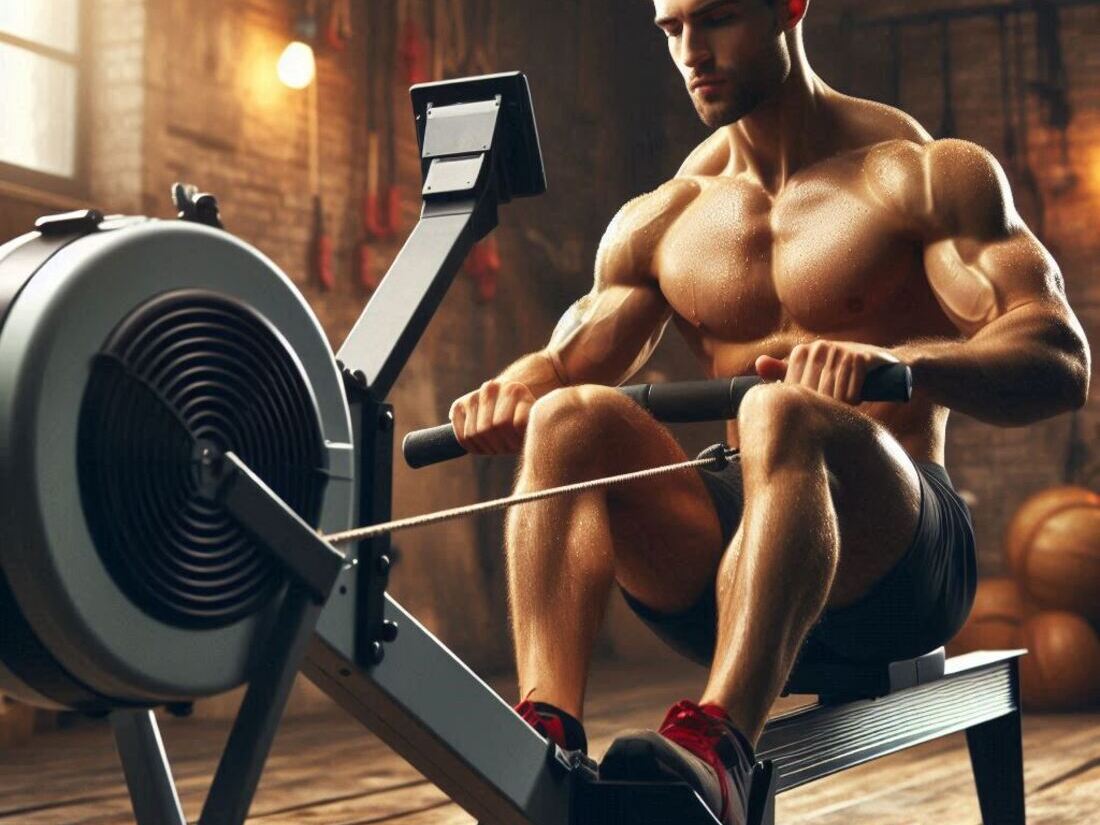
While rowing is often associated with cardio, it’s also an exceptional strength-building exercise.
Your legs, core, back, and arms will all experience increased strength and tone as you consistently engage in rowing workouts.
Weight Management
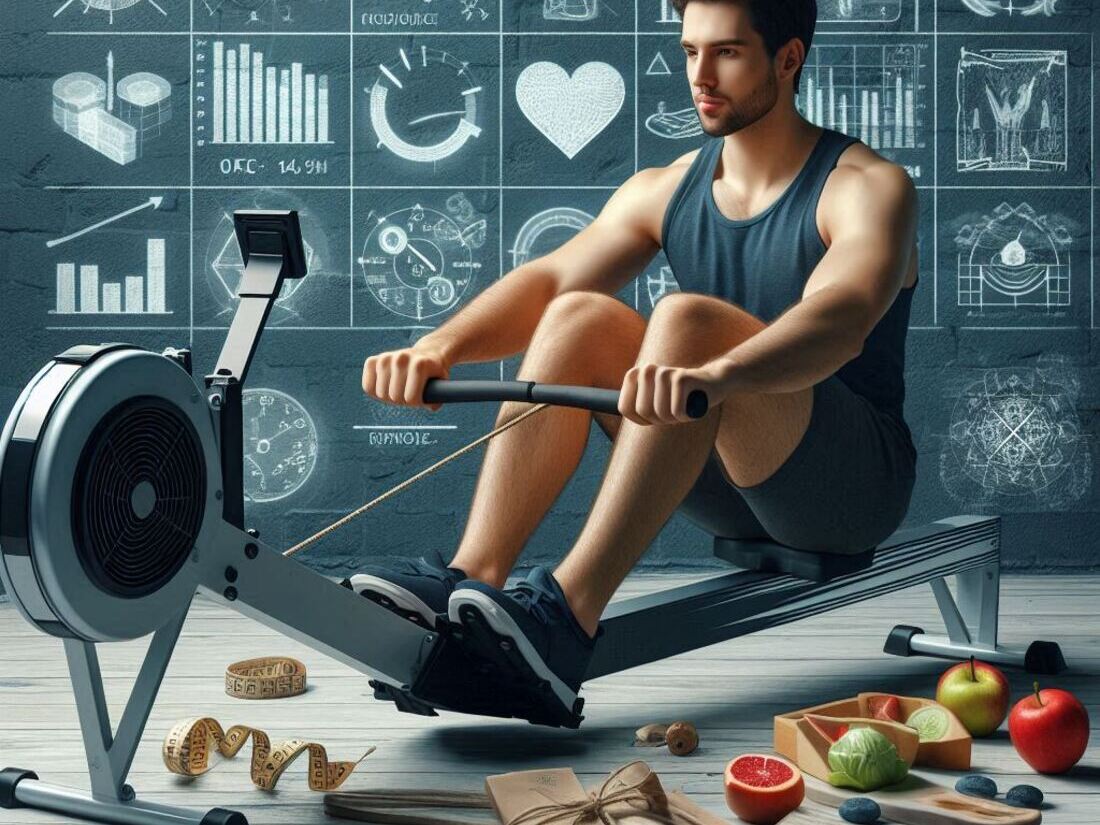
Rowing is a calorie-burning powerhouse.
Regular rowing sessions can contribute to weight loss or weight management goals.
By combining rowing with a balanced diet, you can effectively achieve your desired body composition.
Improved Posture
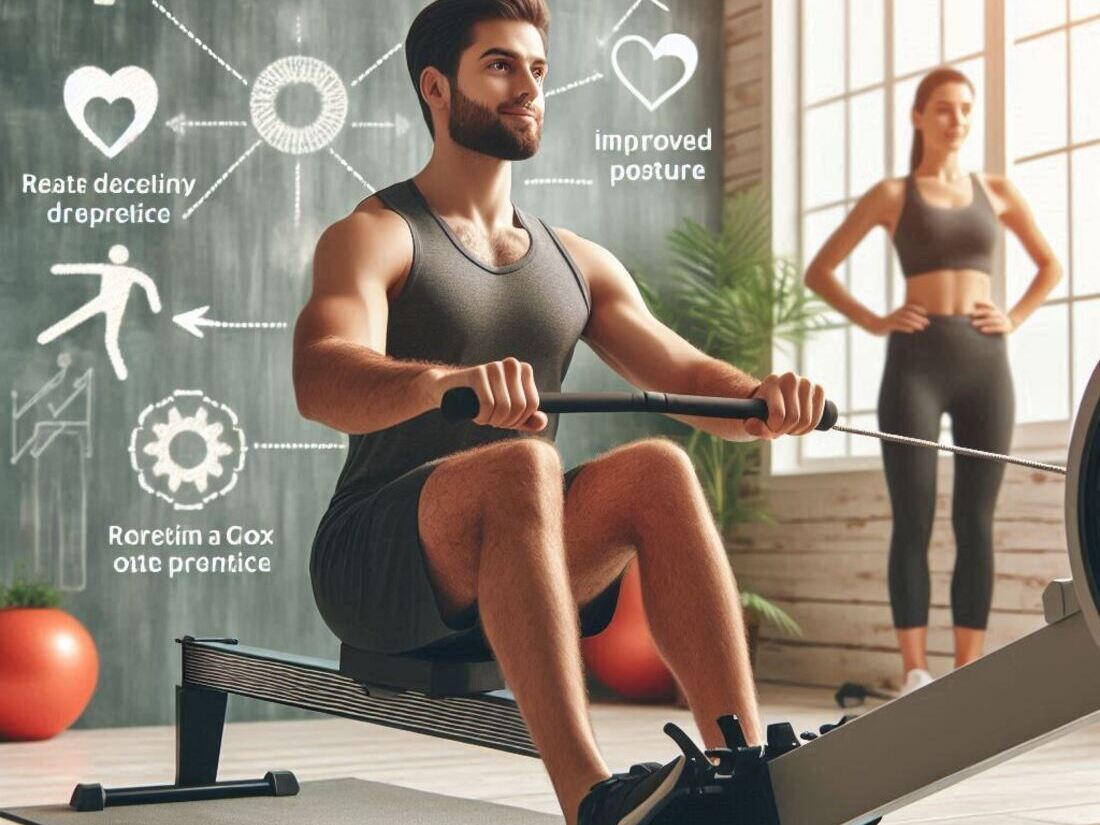
Rowing engages your core muscles, which are essential for maintaining good posture.
Consistent rowing can help correct postural imbalances and alleviate back pain caused by prolonged sitting or poor posture.
By understanding these benefits, you can appreciate the versatility and effectiveness of rowing as a fitness activity.
Choosing the Right Rowing Machine for You
Selecting the ideal rowing machine involves considering several factors to ensure it aligns with your fitness goals, lifestyle, and available space.
Let’s break down the key elements to guide your decision-making process.
Factors to Consider
Before diving into specific machine types, it’s essential to assess your individual needs and preferences. Consider the following:
- Fitness Level: Are you a beginner, intermediate, or advanced rower?
- Space Availability: How much room do you have for a rowing machine?
- Budget: Determine your spending limit for a rowing machine.
- Desired Features: What features are important to you, such as a monitor, adjustable resistance, or foldable design?
Types of Rowing Machines
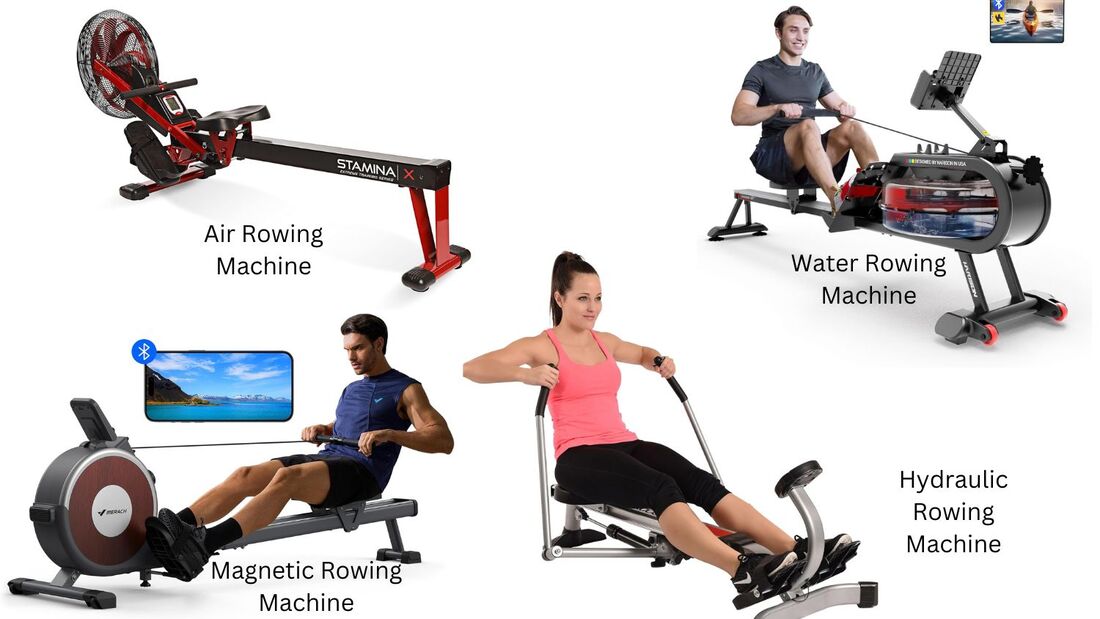
Understanding the different types of rowing machines will help you narrow down your options.
Each type offers distinct characteristics and benefits:
- Air Resistance: Known for their realistic rowing experience and adjustable intensity, air resistance machines generate resistance by fanning air.
- Water Resistance: Simulating the feel of rowing on water, these machines offer a smooth and quiet workout.
- Magnetic Resistance: Providing consistent and smooth resistance, magnetic machines are often quieter and require less maintenance.
- Hydraulic Resistance: Using hydraulic cylinders, these machines offer a lower-impact workout but may have limited resistance levels.
Here’s a table that compares the different types of rowing machines:
| Feature | Air Resistance | Water Resistance | Magnetic Resistance | Hydraulic Resistance |
|---|---|---|---|---|
| Price | Moderate | High | Moderate to High | Low |
| Noise Level | Moderate | Low | Quiet | Quiet |
| Resistance | Adjustable | Adjustable | Adjustable | Fixed |
| Maintenance | Moderate | High | Low | Low |
| Pros | Realistic feel, adjustable intensity | Quiet, smooth, immersive experience | Consistent, low maintenance, quiet | Affordable, low impact |
| Cons | Can be noisy, requires maintenance | Can be expensive, requires water filling | Less realistic feel | Limited resistance levels |
This table can help you compare the different types of rowing machines and choose the one that’s right for you.
Key Features to Look For
To maximize your rowing experience, pay attention to these key features when selecting a machine:
- Monitor: A clear and informative monitor can track your workout data, including distance, time, calories burned, and strokes per minute.
- Resistance Levels: Adjustable resistance allows you to tailor workouts to your fitness level and goals.
- Seat Comfort: A well-padded and adjustable seat is crucial for long and enjoyable rowing sessions.
- Footrests: Secure and adjustable footrests ensure proper form and prevent discomfort.
- Handle Design: A comfortable and ergonomic handle promotes efficient rowing.
- Warranty: A reliable warranty provides peace of mind and protection against manufacturing defects.
By carefully considering these factors and comparing different models, you can select the perfect rowing machine to achieve your fitness objectives.
Rowing for Beginners
Getting Started: Proper Form and Technique
Mastering proper rowing technique is crucial for maximizing benefits and preventing injuries.
Here’s a basic breakdown of the rowing stroke:
- Legs: Initiate the stroke by driving through your legs, extending them fully.
- Core: Engage your core to maintain a stable posture and transfer power from your legs to your upper body.
- Arms: Pull the handle towards your chest, keeping your elbows close to your body.
- Recovery: Return to the starting position by extending your arms, relaxing your core, and sliding the seat back.
Low-Impact Workouts: Building Endurance and Strength
Beginners should focus on building a solid foundation of endurance and strength. Here are some workout tips:
- Start slowly: Begin with short, low-intensity sessions to get accustomed to the movement.
- Focus on technique: Prioritize correct form over speed.
- Vary your pace: Incorporate intervals of higher intensity to challenge yourself.
- Listen to your body: Take rest days and avoid overexertion.
Recommended Machines for Beginners
When choosing a rowing machine for beginners, prioritize affordability, ease of use, and basic features.
Consider these options: (Note: Affiliate Links)
- Air resistance machines: Often budget-friendly and offer a realistic rowing experience.
- Magnetic resistance machines: Smooth and quiet operation, suitable for home use.
- Hydraulic resistance machines: Affordable but may have limited resistance levels.
Tip: Look for machines with clear display screens and adjustable seat and footrests.
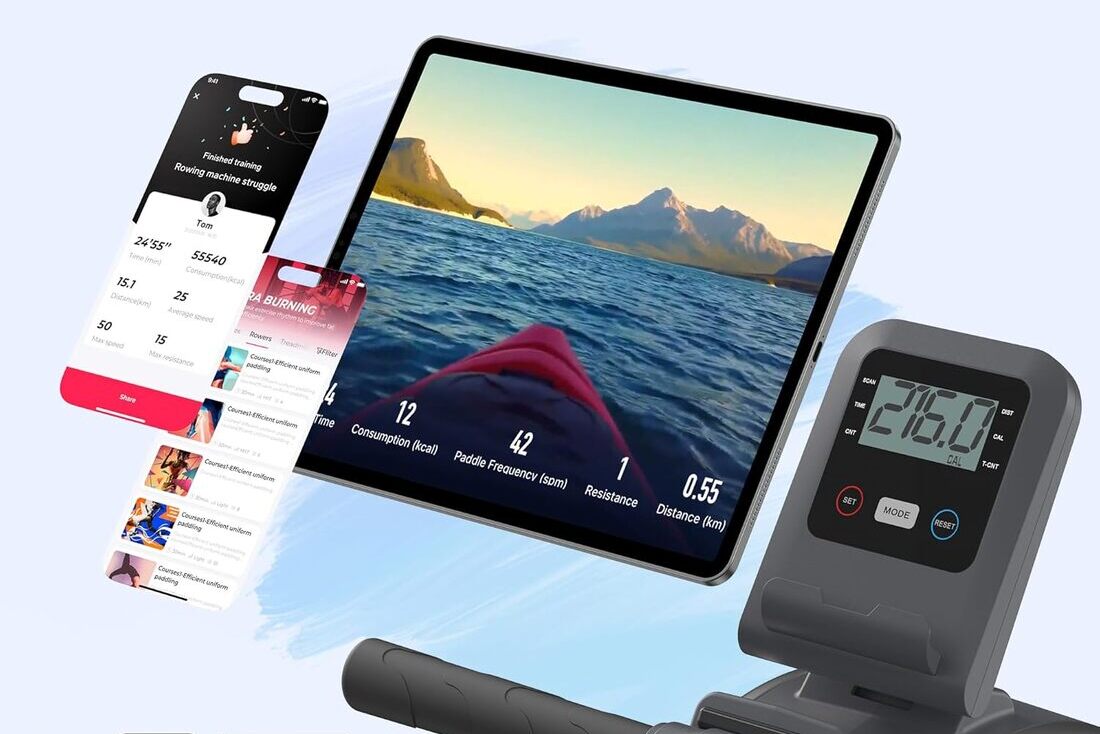
Sample Workout Routine
This beginner-friendly workout can be adjusted based on fitness levels:
- Warm-up: 5 minutes of light rowing
- Interval training: Alternate between 2 minutes of moderate-intensity rowing and 1 minute of rest for 20 minutes.
- Cool-down: 5 minutes of easy rowing
Progression: As fitness improves, increase the duration and intensity of workouts.
By following these guidelines, beginners can establish a strong foundation in rowing and enjoy the many benefits this exercise offers.
Rowing for Intermediate Users
Progressing Your Workouts: Increasing Intensity and Duration
As you advance your rowing fitness, it’s time to challenge yourself with increased intensity and duration.
Focus on building endurance and strength while maintaining proper form. Consider these tips:
- Increase workout duration: Gradually extend your rowing sessions to improve stamina.
- Experiment with resistance: Adjust resistance levels to challenge different muscle groups.
- Monitor your performance: Track your progress to measure improvement.
Incorporating Interval Training: Boosting Calorie Burn
Interval training is an effective way to burn calories and improve cardiovascular fitness.
Alternate between high-intensity bursts and periods of recovery.
Experiment with different interval structures to find what works best for you.
- Example interval workout: 30 seconds of high-intensity rowing followed by 30 seconds of rest, repeated for 10 rounds.
Recommended Machines for Intermediate Users
Intermediate rowers may benefit from machines with additional features to enhance their workout experience: (Note: Affiliate Links)
- Adjustable resistance: Allows for precise control over workout intensity.
- Performance monitor: Provides detailed feedback on metrics like stroke rate, distance, and calories burned.
- Multiple workout programs: Offers variety and challenges.
- Comfortable seating: Essential for longer workouts.
Sample Workout Routine
This intermediate workout incorporates interval training for improved fitness:
- Warm-up: 5 minutes of steady-state rowing
- Interval training: 8 rounds of 3 minutes at high intensity followed by 2 minutes of recovery
- Cool-down: 5 minutes of easy rowing
Remember: Listen to your body and adjust the workout to suit your fitness level.
By incorporating these elements into your routine, you’ll continue to progress and achieve your fitness goals.
Rowing for Advanced Users
High-Intensity Workouts: Building Power and Speed
Advanced rowers seek to push their physical limits and enhance performance.
Incorporating high-intensity workouts is essential for building power, speed, and endurance.
- Focus on power output: Aim to generate maximum force during each stroke.
- Incorporate sprints: Short bursts of high-intensity rowing followed by brief recovery periods.
- Strength training: Complement rowing with strength exercises to enhance power output.
Cross-Training with Rowing: Enhancing Overall Athletic Performance
Rowing can be a valuable tool for athletes in other sports. It provides a full-body workout, improves cardiovascular fitness, and enhances power and endurance.
- Identify complementary sports: Consider sports that benefit from similar physical attributes as rowing (e.g., swimming, cycling, running).
- Create cross-training plans: Incorporate rowing into your existing training regimen.
- Monitor performance: Track improvements in your primary sport.
Recommended Machines for Advanced Users
Advanced rowers often require machines that can withstand intense workouts and provide precise feedback. Consider these features: (Note: Affiliate Links)
- Durability: Look for machines built to withstand high-intensity training.
- Performance metrics: Advanced performance tracking capabilities to monitor progress.
- Customizable settings: Ability to tailor workouts to specific goals.
- Ergonomic design: Optimal comfort for extended training sessions.
Sample Workout Routine
This advanced workout focuses on high-intensity intervals and power development:
- Warm-up: 10 minutes of dynamic stretching and light rowing.
- Interval training: 8 rounds of 30 seconds all-out effort followed by 30 seconds of rest.
- Power building: 5 sets of 10-12 repetitions of rowing-specific strength exercises (e.g., bent-over rows, pull-ups).
- Cool-down: 5 minutes of easy rowing and static stretching.
Remember: Always listen to your body and adjust the workout as needed.
Proper form and recovery are essential for preventing injuries and maximizing performance.
Rowing for Seniors
Benefits of Rowing for Seniors
Rowing offers a multitude of benefits for seniors, contributing to improved overall health and well-being:
- Improved balance and stability: Rowing engages the core muscles, essential for maintaining balance and reducing fall risk.
- Increased flexibility: The rowing motion promotes flexibility in the shoulders, back, and legs.
- Enhanced strength: Rowing works multiple muscle groups, helping to maintain and build strength.
- Cardiovascular health: Regular rowing sessions improve heart health and endurance.
- Mental well-being: Physical activity like rowing can boost mood and cognitive function.
Safety Considerations
While rowing is generally safe, it’s essential to prioritize safety, especially for seniors:
- Consult your doctor: Seek medical clearance before starting any new exercise program.
- Proper form: Ensure correct technique to prevent injuries.
- Listen to your body: Pay attention to any pain or discomfort and adjust your workout accordingly.
- Start slowly: Begin with short, low-intensity sessions and gradually increase duration and intensity.
Recommended Machines for Seniors
When selecting a rowing machine for seniors, focus on comfort, ease of use, and safety: (Note: Affiliate Links)
- Stability: Choose a machine with a wide, stable base.
- Easy entry and exit: Look for machines with a low seat height and accessible handles.
- Clear display: A large, easy-to-read monitor is essential.
- Adjustable resistance: Allows for customization based on fitness level.
- Comfortable seat: Proper cushioning is crucial for long-term comfort.
Sample Workout Routine
This workout is designed for seniors and focuses on low-impact exercise and gradual progression:
- Warm-up: 5 minutes of gentle rowing to increase heart rate.
- Main workout: 20-30 minutes of steady-state rowing at a comfortable pace.
- Cool-down: 5 minutes of easy rowing and static stretches.
Remember: Consistency is key. Aim for at least 30 minutes of moderate-intensity exercise most days of the week.
By following these guidelines, seniors can enjoy the many benefits of rowing and improve their overall quality of life.
Maintaining Your Rowing Machine
Proper maintenance is essential to prolong the life of your rowing machine and ensure optimal performance.
Regular Cleaning and Maintenance Tips
- Wipe down after each use: Remove sweat and moisture to prevent corrosion and buildup.
- Check for loose parts: Regularly inspect bolts, screws, and other hardware for tightness.
- Lubricate moving parts: Consult your user manual for specific lubrication recommendations.
- Clean the monitor: Use a soft cloth to gently clean the monitor screen.
- Inspect the chain: Check for wear and tear, and lubricate as needed.
- Store properly: Cover the machine when not in use to protect it from dust and moisture.
Troubleshooting Common Issues
- Squeaky noises: Check for loose parts, worn-out pads, or dry chains. Lubricate as needed.
- Resistance issues: Ensure proper resistance settings and check for any obstructions.
- Monitor malfunctions: Refer to the user manual for troubleshooting or contact the manufacturer.
- Seat or footrest problems: Adjust the seat and footrests for optimal comfort and performance.
- Chain slippage: Adjust the chain tension or replace worn-out components.
Note: Always consult your user manual for specific maintenance instructions and troubleshooting tips for your rowing machine model.
By following these guidelines, you can keep your rowing machine in top condition and enjoy many years of effective workouts.
FAQs About Rowing Machines
To provide additional value to your readers, let’s address some frequently asked questions about rowing machines:
- Is rowing a good workout for weight loss?
- Rowing is an excellent exercise for burning calories and supporting weight loss when combined with a balanced diet.
- How often should I use my rowing machine?
- Aim for at least 3-4 times per week for optimal results. Consistency is key.
- Can rowing machines help with back pain?
- Rowing can strengthen the core muscles, which can help alleviate back pain. However, it’s essential to maintain proper form.
- How long should a rowing workout be?
- Workout duration depends on your fitness level. Beginners can start with 20-30 minutes, while more advanced users may aim for longer sessions.
- Can I use a rowing machine if I have knee problems?
- Rowing is generally low-impact, but it’s advisable to consult with a healthcare professional before starting any new exercise regimen.
- What is the best time of day to use a rowing machine?
- The best time to exercise depends on your personal preference and schedule. Consistency is more important than the specific time of day.
- How do I choose between air, water, magnetic, and hydraulic resistance?
- Consider factors like budget, desired workout experience, and noise level when selecting a resistance type.
- Can I use a rowing machine to build muscle?
- Yes, rowing engages multiple muscle groups, helping to build strength and tone.
By addressing these common questions, you can provide valuable information to your readers and establish your website as a trusted resource.
Conclusion
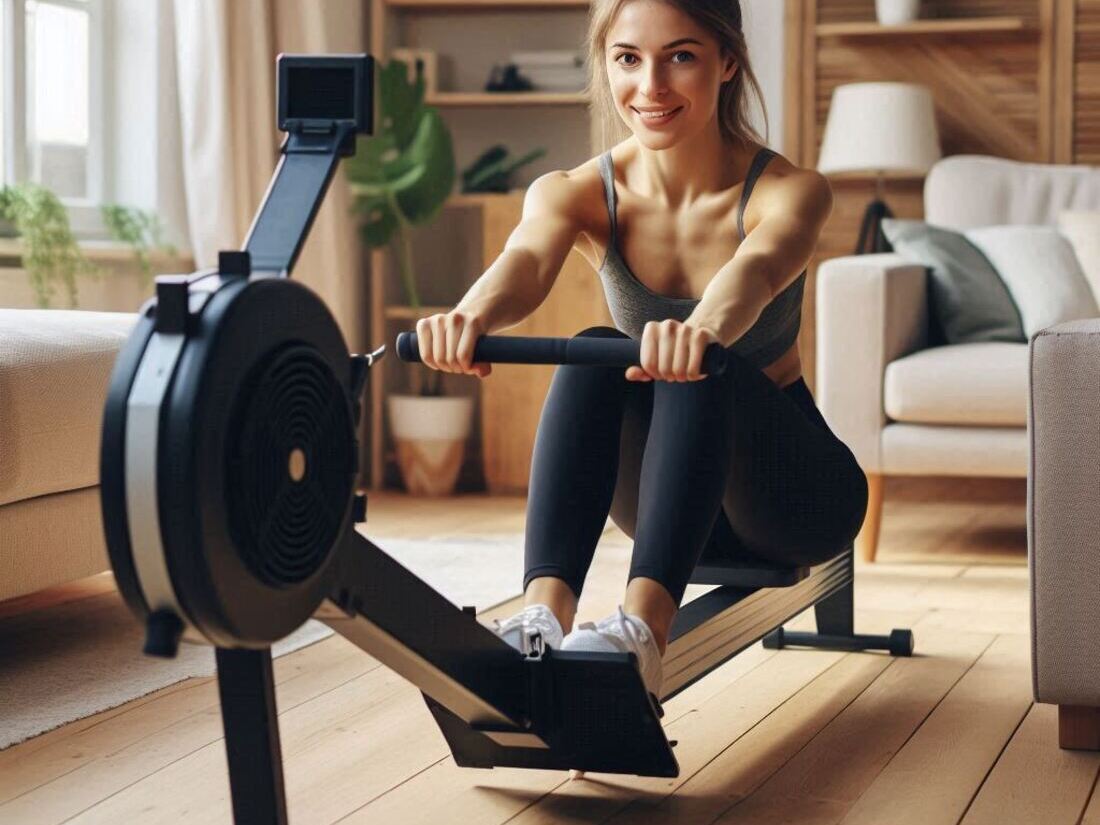
Rowing is a versatile exercise that offers a multitude of benefits for people of all ages and fitness levels.
From improving cardiovascular health and building strength to enhancing balance and flexibility, rowing provides a comprehensive workout.
By selecting the right rowing machine and following tailored workout routines, you can achieve your fitness goals and enjoy the many rewards of this low-impact exercise.
Finding the perfect rowing machine for your needs can be overwhelming, but this guide has provided you with the essential information to make an informed decision.
Remember to prioritize comfort, safety, and your specific fitness objectives when choosing a machine.
To further enhance your rowing experience, explore our other resources for additional workout ideas, maintenance tips, and expert advice.
Start your rowing journey today and discover the transformative power of this incredible exercise!
Explore our other rowing resources: Conquering Every Budget: Top Rowing Machines For Every Price Point.
References
Training Considerations for Rowing Athletes. National Strength and Conditioning Association (NSCA)

